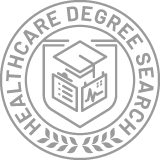Vermont Healthcare Colleges
In 2021, 1,087 students received a healthcare degree from a college in Vermont, making it rank #50 in terms of graduations. Students who live in the state can take advantage of in-state tuition averaging $31,898 a year, while students from out-of-state may pay a higher average tuition of $37,114 a year.
About 58% of students who go to college in this state take out loans, with the average yearly loan amount being $8,621 per year.
Featured schools near , edit
Most Popular Healthcare Schools in Vermont
Learn more about the most popular schools below:
There are 11,136 undergraduates at UVM, of which 10,235 are full-time, and there are 13,292 students altogether. The average graduation time for an undergraduate student at UVM is 4.2 years.
Approximately 47% of the students who attend this school take out loans. The average amount of student loans is $9,995 a year.
Students who graduate from UVM with a bachelor’s degree make an average of $48,164 during the early years of their career after graduation.
Request Information
There are 1,520 students at Vermont Tech in total, 1,516 of which are undergraduates, and of those, 829 are full-time. For undergraduates at Vermont Tech, the average graduation time is 4.6 years.
72% of Vermont Tech students take out loans to afford college costs. The average amount of student loans is $10,622 a year.
Students who graduate from Vermont Tech with a bachelor’s degree make an average of $41,340 during the early years of their career after graduation.
Request Information
There are 3,512 undergraduates at Champlain, of which 2,325 are full-time, and there are 4,137 students altogether. It takes the average Champlain undergraduate about 4.1 years to complete their degree.
Roughly 65% of students at Champlain take out loans to pay for college. The typical student loan amount is $8,296 a year.
Students who graduate from Champlain with a bachelor’s degree make an average of $48,844 during the early years of their career after graduation.
Request Information
There are 3,975 students at Norwich in total, 3,236 of which are undergraduates, and of those, 2,522 are full-time. For undergraduates at Norwich, the average graduation time is 4.2 years.
Approximately 71% of the students who attend this school take out loans. The average amount of student loans is $8,573 a year.
The early-career average earnings of bachelor’s-degree holders from Norwich is $59,743.
Request Information
The total student population at Community College of Vermont is 5,102, which includes 812 full-time undergraduates. The school has a student-to-faculty ratio of 21 to 1.
Roughly 7% of students at CCV take out loans to pay for college. The average amount of student loans is $5,058 a year.
Students who graduate from CCV with a bachelor’s degree make an average of $37,362 during the early years of their career after graduation.
Request Information
The total student population at Saint Michael’s College is 1,724, of which 1,537 students are undergraduates and of those, 1,492 are full-time. The average graduation time for an undergraduate student at Saint Michael’s is 4.1 years.
Approximately 61% of the students who attend this school take out loans. The average amount of student loans is $12,115 a year.
A typical bachelor’s-degree holder from this school earns an average of $46,898 during the early-career years.
Request Information
There are 799 students at Bennington in total, 697 of which are undergraduates, and of those, 606 are full-time. The school has a student-to-faculty ratio of 9 to 1.
Roughly 55% of students at Bennington take out loans to pay for college. The average amount of student loans is $6,846 a year.
Students who graduate from Bennington with a bachelor’s degree make an average of $24,711 during the early years of their career after graduation.
Request InformationThe total student population at SIT Graduate Institute is 137, of which 57 students are undergraduates and of those, 20 are full-time. The school has a student-to-faculty ratio of 12 to 1.
Request InformationReferences
More about our data sources and methodologies.






